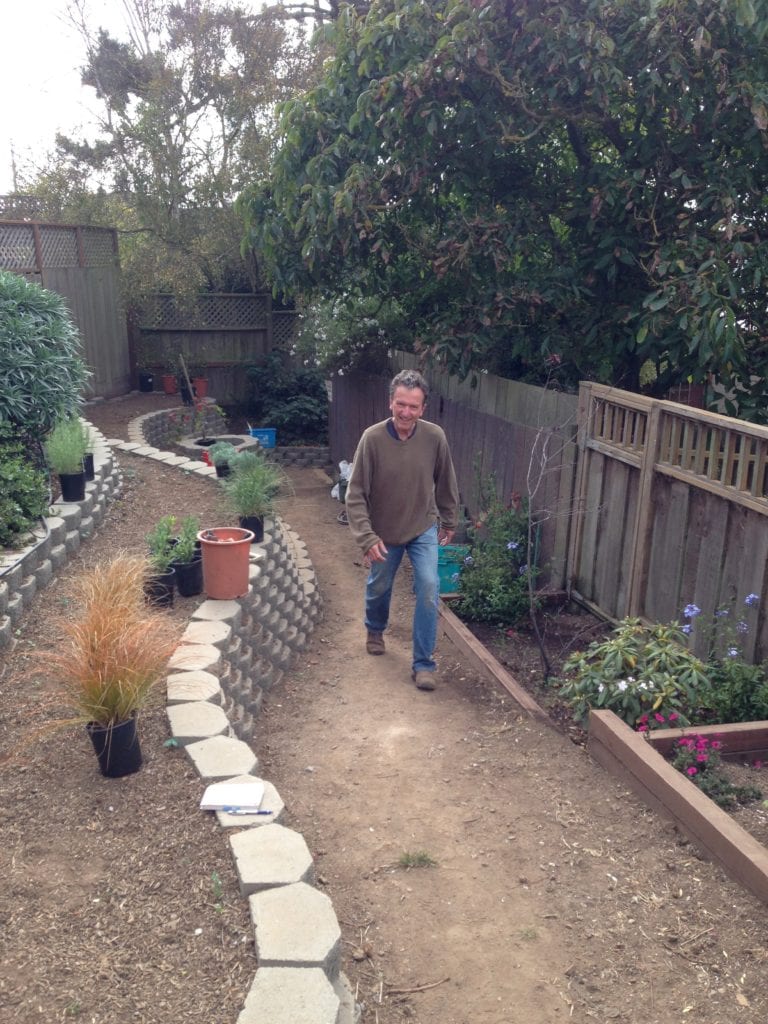
by Murray Schneider
Penny Lane, once a 19th century carriage path, makes a short, rutted journey threading between Sussex and Surrey Street backyards, then dead-ends in 200 yards.
At that point, the public easement bifurcates: fork left, up to Sussex Street; or dogleg right, down to Surrey Street.
“The fact is, the change in elevation made the Surrey Street descent difficult in wet weather,” said Adam King, a Diamond Street resident for 18 years. “The path was overgrown with Cape ivy and Himalayan blackberry, and in heavy rains a significant stream developed and spilled onto Surrey Street.”
King and several of his 18 volunteers, including children, gathered at the lane’s crossroad on a recent Saturday to continue working on a project that has occupied them since March 2013, preparing the soil and weeding. Perfume scented the air and songbirds jabbered.
Due to the efforts of these neighbors, this 90-degree turn to Surrey Street is significantly changed. It now consists of 39 steps, a retaining wall of 1,800 concrete bricks, and hundreds of drought-tolerant native plants such as coyote bush and California lilacs.
King, an architect for BAR Architects, moved to a 16-foot metal mesh spire that towered like an exclamation mark, punctuating the split in the furrowed path. “It’s literally a landmark,” he said about the tower, which eventually will be covered with grapevines. “It will draw strollers down the lane.”
Stacked next to it were concrete blocks, which were put in place by a Mission Clean and Green team and which had the imprimatur of the Department of Public Works.
King did the necessary preliminary spadework. He’d organized signature gathering of Surrey Street stakeholders and delivered an informational presentation at a scheduled Glen Park Association meeting.
“The San Francisco Park Alliance acted as a liaison between Friends of Penny Lane and DPW,” said King. “It provided a fiscal sponsorship program to handle neighbor donations to a dedicated account.”
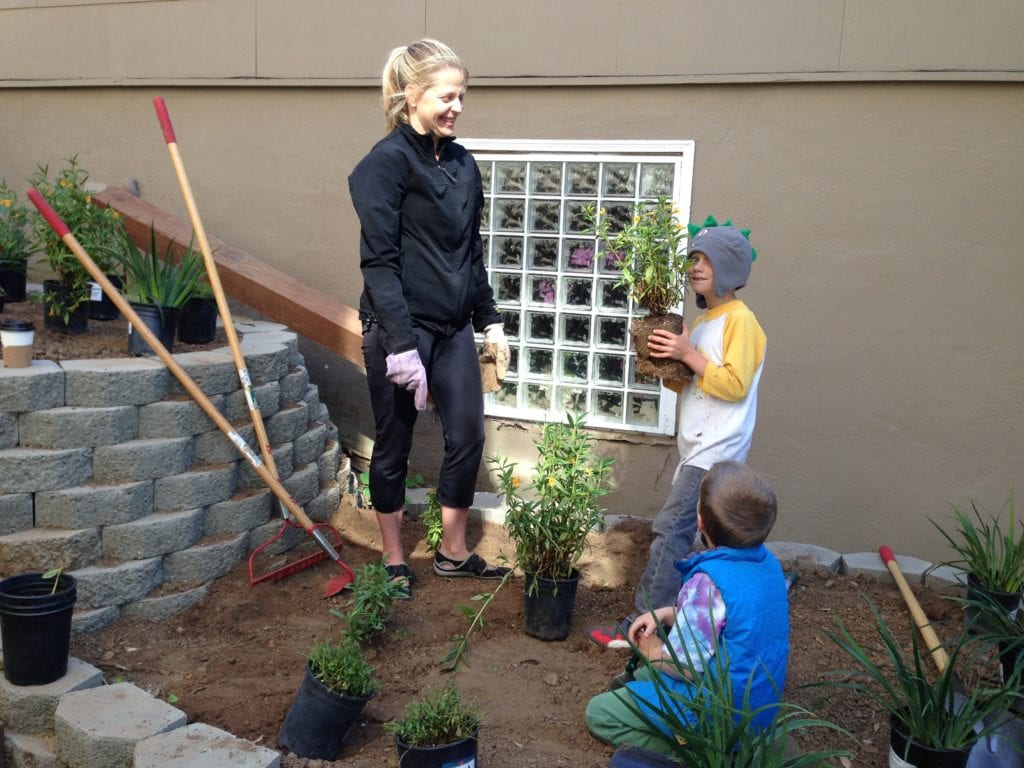
Altogether, $6,000 made it into the Park Alliance coffers, earmarked to cover the bills for plants, bark, bricks, fertilizer and tools.
Ben Cook has lived on Surrey Street for six years, and he accompanied his boys, Miles, 7, and Jasper, 5, to the work party. Diana Scearce, Cook’s wife, joined them.
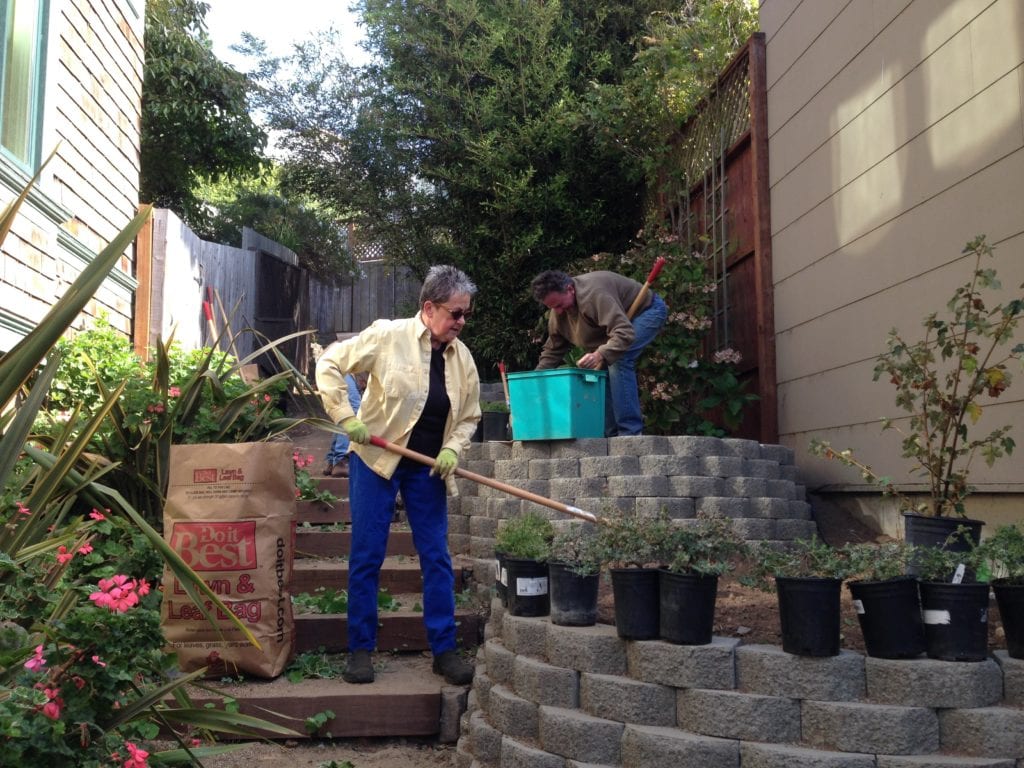
“What people have done here,” said Scearce, “reaffirms everything we love about this neighborhood.”
She handed her son a hand trowel. “Miles, can I give you a very special job? Can you dig these out?” she asked, pointing to several entrenched roots.
King selected a pickaxe, and he and Cook began wrestling to extract Cape ivy roots from the roots of an ornamental hydrangea bush, an operation that ultimately was successful in keeping the bush but removing the interloper. “The deeper we go, the longer it’ll last,” said King.
By then 10 neighbors had joined the work party, the twentieth since the project began a year ago.
“Along with the steps,” said King, “the rest of the ground is terraced. It’ll help retain runoff and allow the rain to percolate – not to mention native plants supporting fauna.”
“Hey, Jasper,” said Ben Cook, as if on cue, “you want to see a millipede?”
Second grader Ananda White wheeled a wagonload of bark around the elbow in the steps and began removing bags.
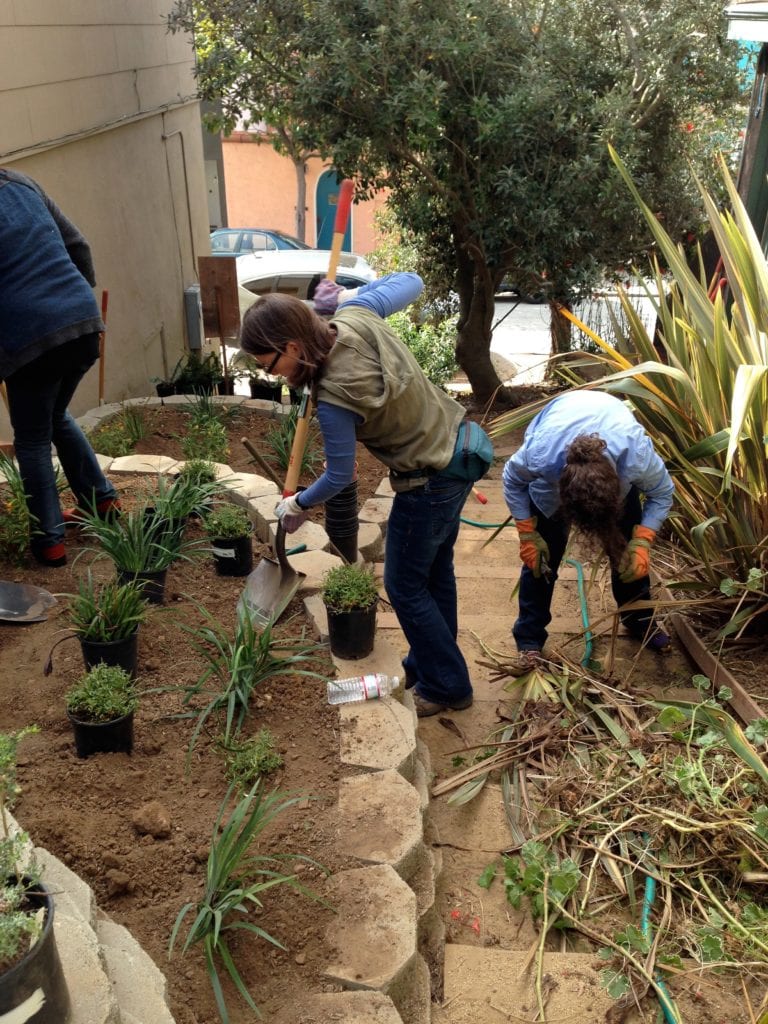
Clara Basile’s house is adjacent to the stairs.“I’ve lived here for seven years,” she said, “and it was an overgrown mess of ivy and blackberry. No one maintained it. Now it’s like having a park in my own backyard.”
But not all the nearby residents join the chorus of approval. Some preferred Penny Lane left neither manicured nor symmetrical, simply a rustic respite from urban congestion. Now that it is spruced-up and sculpted, they contend, the lane loses its unkempt character in favor of tidy charm.
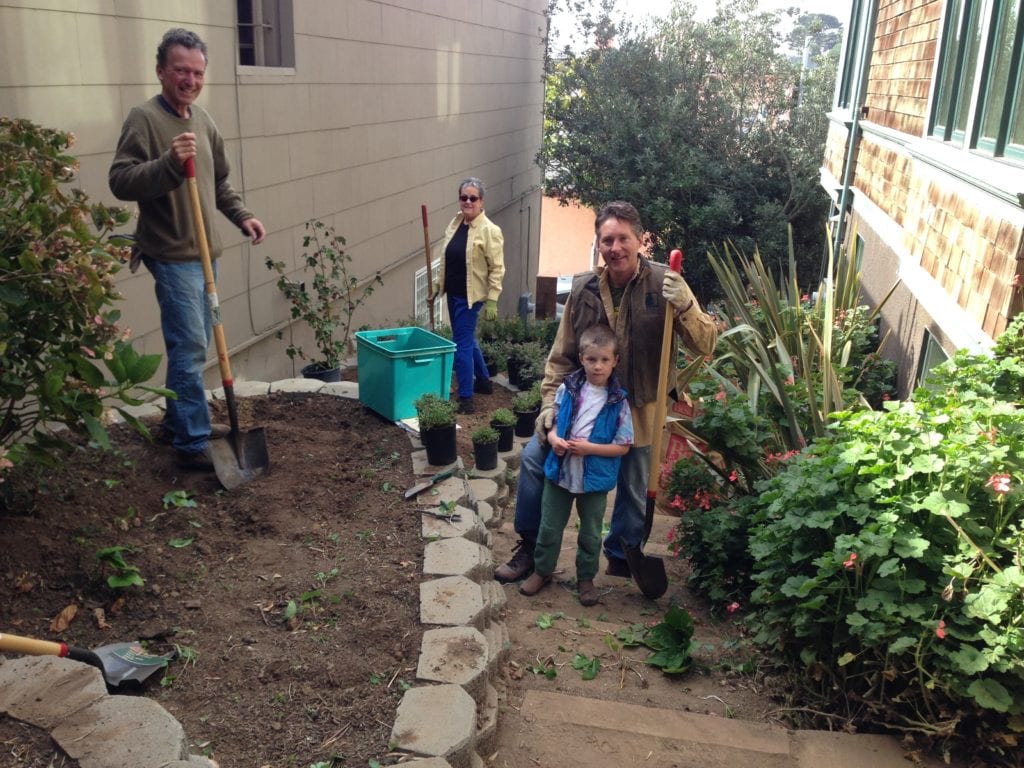
Trevor Curry, Basile’s neighbor, doesn’t hold that view. Curry, who has been on Surrey Street for three years, sees daylighting the lane as a positive change.
“Clara’s wall hasn’t been tagged since we started the steps,” he said, as he pulled out oxalis. “Besides, with the improved drainage, I can wear dress shoes when I walk my dog.”
“Early on I was concerned about water, particularly in a drought year,” said Norman Fineman, who has lived on Surrey Street for 32 years and questioned the amount of water needed for plants. When he was assured that the new shrubbery required only initial watering, Fineman was won over.
“It’s feels like the 1940s back here,” he said.
Fineman’s arithmetic is 100 years off. Penny Lane remains embroidered in a 1840s time warp, where its beat-up fences list at 45-degree angles and its pebbled path sports dogs chasing rubber balls into bushes that hug the alley. Only a few cars and their garages take note the present century. It’s not hard to imagine yourself 140 miles to the east, near John Sutter’s sawmill, when James Marshall leaned over and retrieved a gold nugget that changed San Francisco forever.
Then a BART train rattles into Glen Park station, echoing up Diamond Street, and brings you back to the present.
David Wong, who has lived on Chenery Street for 13 years, dug alongside Gregory Holmes, who’d been on Chenery for 20 years.
“This is my first time volunteering, and I had no idea Penny Lane existed,” said Wong. “I logged onto nextdoor.com and found out about the work party.”
Ashley Hathaway came over from Mizpah Street, now wielding a shovel atop a plant bed. Todd and Amanda Renschler strolled by with their two young children.
“John Priola, who volunteers on the Bosworth median project, donated succulents, and Jeff Britt, who passed away last February, helped select plants and advised where they should be placed,” said King. “And we received advice from the Glen Park Garden Club.
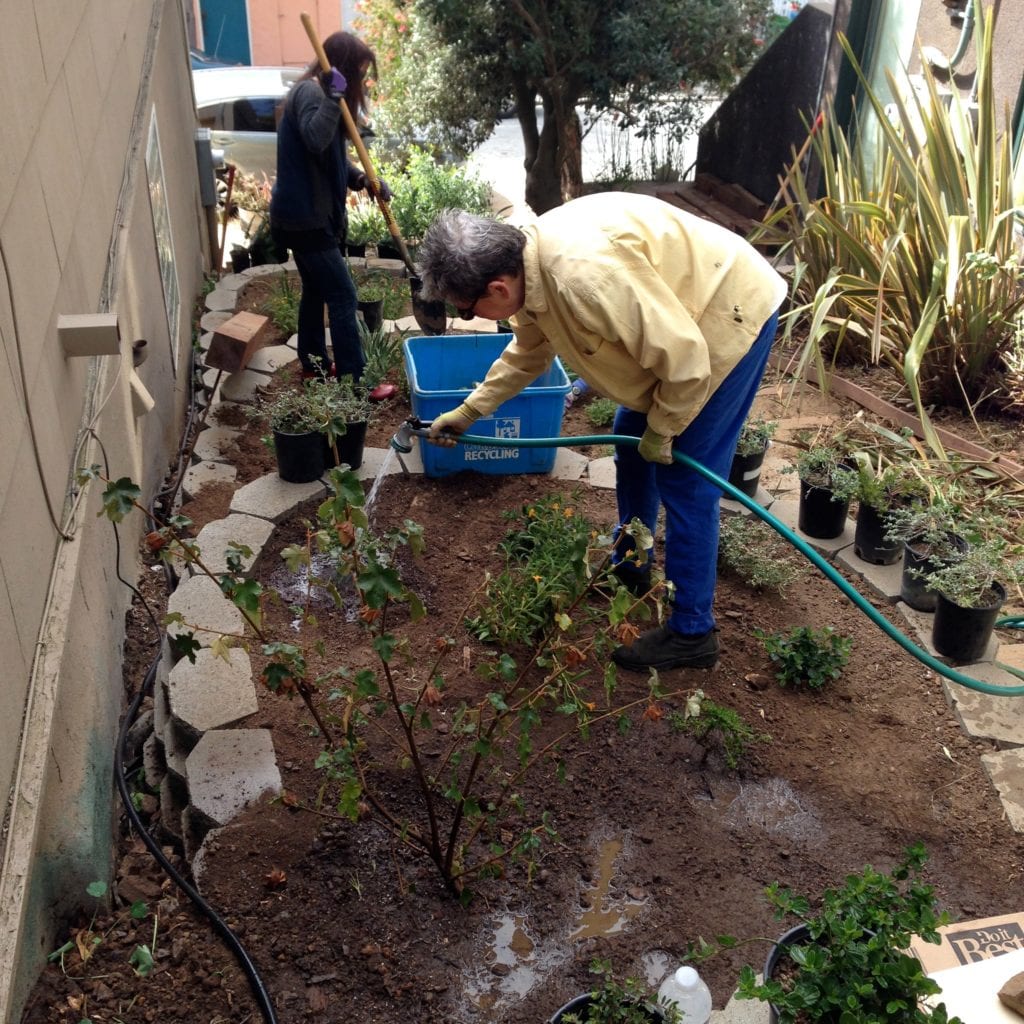
Connie Freeman, Jean Conner and Kay Hamilton Estey all contributed.

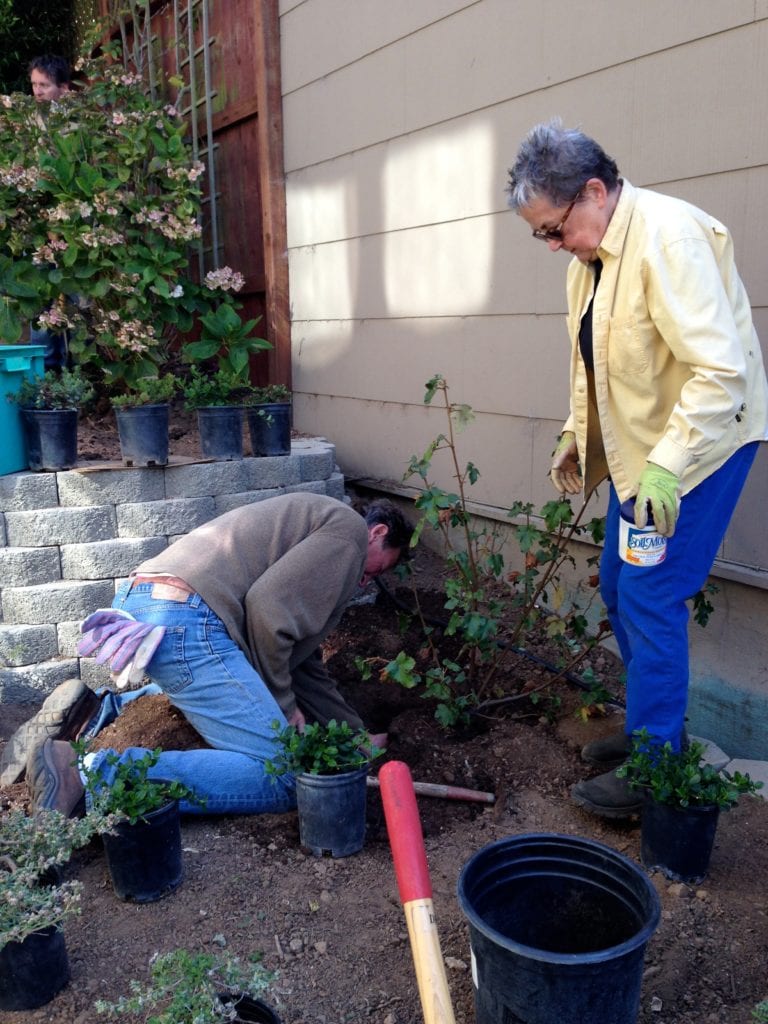
An orchestra needs its conductor.
“I only met Adam through this project,” said Clara Basile, one of the homeowners who have contribute water from their own drip systems to irrigate plants in the sections of the rebuilt path outside their property lines. “He’s unbelievably dedicated, and he’s made this happen.”
“Adam has done us all a great favor,” chimed in Norman Fineman. “It’s his vision and his ability to coordinate that has gotten this project done.”
So why did an architect who’d spent his formative professional career in Manhattan become involved in directing all this volunteer labor for a year or more?
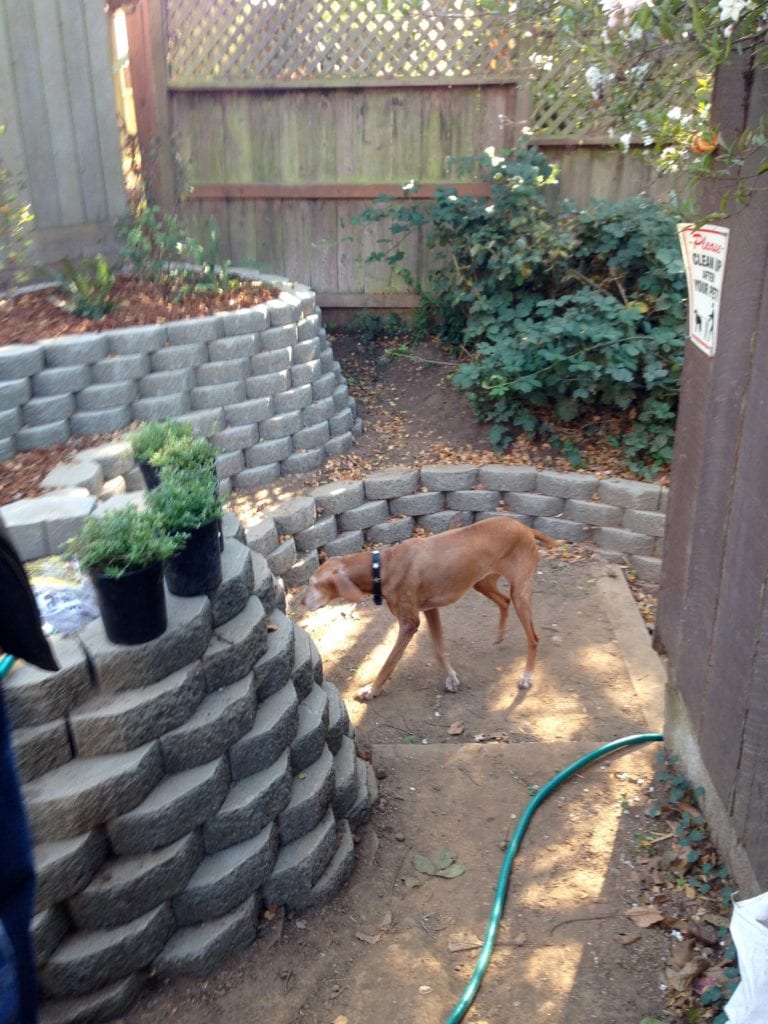
“Why not?”
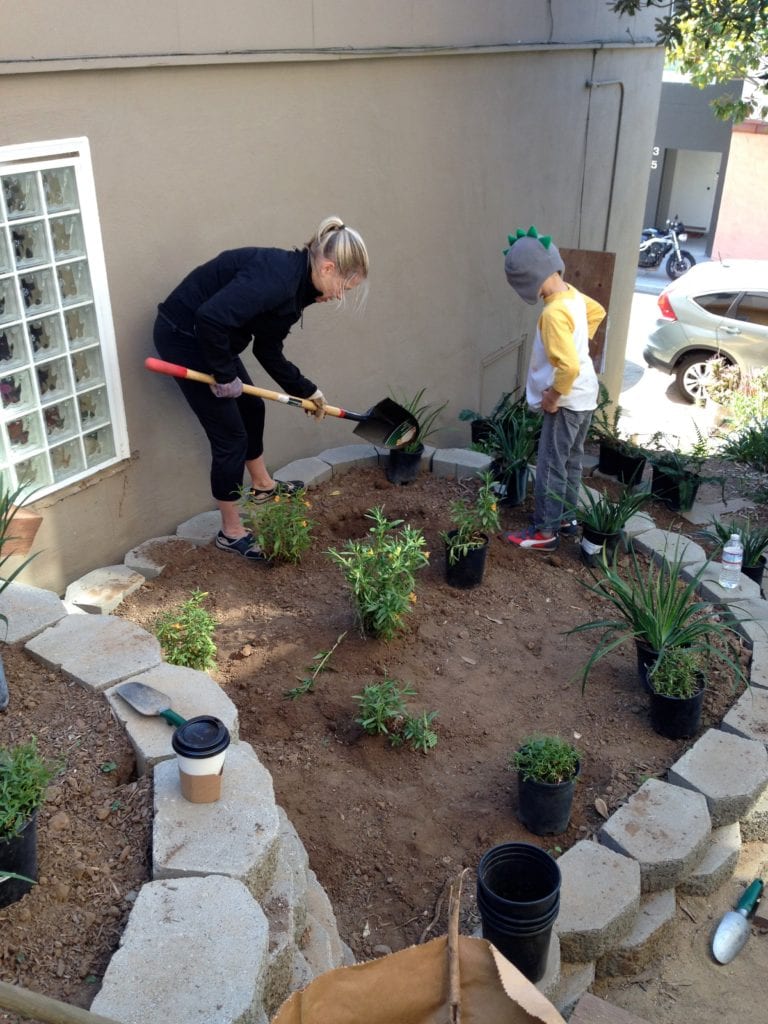
He became more expansive.
“The longer answer is that it’s an opportunity for neighbors to get involved in their surroundings beyond what is within their own fence,” he said. “People who pass by while we work are sometimes confused about whether Penny Lane is privately owned or a public space.”
“But Penny Lane and places like it are something in between the two, just like the sidewalk in front of our houses,” he continued. “If we think differently about our neighborhood and treat it as though it is ours, why would anyone ask why we would want to improve Penny Lane?”
King can sing in Clara Basile’s choir any day.
“It’s so beneficial,” she said. “I get to look at this from my dining room.”
Striking a last note, Adam King said: “The steps are a wonderful opportunity to make the neighborhood a little more special than it already is.”